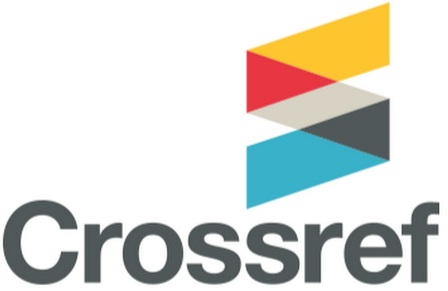The influence of luxury brand selfies on luxury brand preference
(1) Universitas Padjadjaran
(2) Universitas Padjadjaran
(*) Corresponding Author
Abstract
In today’s digital era, the growing phenomenon of luxury brand selfies has sparked interest in understanding their impact on consumer attitudes. This study explores how sharing selfies featuring luxury brands on social media influences consumers’ preferences toward those brands. Employing a quantitative approach, data were collected through an online survey distributed to 225 respondents who had purchased luxury brands and actively shared brand-related selfies. Using Partial Least Squares Structural Equation Modeling (PLS-SEM), the research tested the effect of three dimensions—narcissism, materialism, and selfie posting behavior—on luxury brand preference. The findings reveal that among the three variables, only materialism significantly affects luxury brand preference. In contrast, narcissism and selfie-posting behavior show no meaningful influence. This suggests that highly materialistic individuals are more likely to prefer luxury brands, as these brands align with their desire for symbolic status. The study provides insight into consumer-brand interaction in the digital space. It encourages future research to include additional psychological or cultural variables to better understand brand-related behavior in online environments.
Keywords
Full Text:
PDFReferences
Casteel, A., & Bridier, N. L. (2021). Describing populations and samples in doctoral student research. International Journal of Doctoral Studies, 16, 339–362. https://doi.org/10.28945/4766
Chang, H. H., & Liu, Y. M. (2009). The impact of brand equity on brand preference and purchase intentions in the service industries. The Service Industries Journal, 29(12), 1687–1706. https://doi.org/10.1080/02642060902793557
Chernov, S., & Gura, D. (2024). The luxury goods market: Understanding the psychology of Chinese consumers. European Research on Management and Business Economics, 30, 100254. https://doi.org/10.1016/j.iedeen.2024.100254
Gentile, B., Miller, J. D., Hoffman, B. J., Reidy, D. E., Zeichner, A., & Campbell, W. K. (2013). A test of two brief measures of grandiose narcissism: The Narcissistic Personality Inventory-13 and the Narcissistic Personality Inventory-16. Psychological Assessment, 25(4), 1120-1136. https://doi.org/10.1037/a0033192
Godey, B., Manthiou, A., Pederzoli, D., Rokka, J., Aiello, G., Donvito, R., & Singh, R. (2016). Social media marketing efforts of luxury brands: Influence on brand equity and consumer behavior. Journal of Business Research, 69(12), 5833–5841. https://doi.org/10.1016/j.jbusres.2016.04.181
Gómez-Rico, M., Molina-Collado, A., Santos-Vijande, M. L., Molina-Collado, M. V., & Imhoff, B. (2023). The role of novel instruments of brand communication and brand image in building consumers’ brand preference and intention to visit wineries. Current Psychology, 42, 12711–12727. https://doi.org/10.1007/s12144-021-02656-w
Hair, J. F., Black, W. C., Babin, B. J., & Anderson, R. E. (2019). MULTIVARIATE DATA ANALYSIS EIGHTH EDITION. www.cengage.com/highered
Hair, J. F., Hult, G. T. M., Ringle, C. M., & Sarstedt, M. (2022). A Primer on Partial Least Squares Structural Equation Modeling (PLS-SEM) (Third Edition). Sage.
Hair, J. F., Hult, G. T. M., Sarstedt, M., Danks, N. P., Ringle, C. M., & Ray, S. (2021). Partial Least Squares Structural Equation Modeling (PLS-SEM) Using R A Workbook. Springer. http://www.
Hartmann, J., Heitmann, M., Schamp, C., & Netzer, O. (2021). The Power of Brand Selfies. Journal of Marketing Research, 58(6), 1159–1177. https://doi.org/10.1177/00222437211037258
Hellier, P. K., Geursen, G. M., Carr, R. A., & Rickard, J. A. (2003). Customer repurchase intention: A general structural equation model. European Journal of Marketing, 37(11/12), 1762–1800. https://doi.org/10.1108/03090560310495456
Hofstetter, R., Kunath, G., & John, L. K. (2020). From Sweetheart to Scapegoat: Brand Selfie-Taking Shapes Consumer Behavior.
Ho, S. P. S., & Chow, M. Y. C. (2024). The role of artificial intelligence in consumers’ brand preference for retail banks in Hong Kong. Journal of Financial Services Marketing, 29, 292–305. https://doi.org/10.1057/s41264-022-00207-3
Kwon, E. (2023). Materialistic consumers who need to signal their status: Examination of antecedents and consequences of consumers’ luxury brands engagement on social media. International Journal of Marketing Studies, 15(1), 98–113. https://doi.org/10.5539/ijms.v15n1p98
Ligaraba, N., Cheng, J., Ndungwane, N. F., & Nyagadza, B. (2024). Brand authenticity influence on young adults’ luxury sneakers brand preference: the mediating role of brand image. Future Business Journal, 10(1). https://doi.org/10.1186/s43093-024-00312-w
Liu, M. T., Wong, I. A., Shi, G., Chu, R., & Brock, J. L. (2014). The impact of corporate social responsibility performance and perceived brand quality on customer-based brand preference. Journal of Services Marketing, 28(3), 181–194. https://doi.org/10.1108/JSM-09-2012-0171
Liu, X., & Foreman, J. (2019). Exploring the impact of brand selfies on brand attitude in the Twittersphere. International Journal of Internet Marketing and Advertising, 13(4), 321–337. https://doi.org/10.1504/IJIMA.2019.103419
Naaz, I., Malik, A., Abdullah, M., Tabash, M. I., & Elsantil, Y. (2024). Role of Key Demographic Factors in Consumer Aspirations and Luxury Brand Preference. Innovative Marketing, 20(2), 254–266. https://doi.org/10.21511/im.20(2).2024.21
Ostovan, N., & Khalili Nasr, A. (2022). The manifestation of luxury value dimensions in brand engagement in self-concept. Journal of Retailing and Consumer Services, 66. https://doi.org/10.1016/j.jretconser.2022.102939
Presi, C., Maehle, N., & Kleppe, I. A. (2016). Brand selfies: consumer experiences and marketplace conversations. European Journal of Marketing, 50(9–10), 1814–1834. https://doi.org/10.1108/EJM-07-2015-0492
Rai, B., & Bhattarai, G. (2024). Factors affecting brand preference in passenger car buying in Nepal. Innovative Marketing, 20(1), 77–87. https://doi.org/10.21511/im.20(1).2024.07
Raza, M., Khalid, R., Loureirco, S. M. C., & Han, H. (2024). Luxury brand at the cusp of lipstick effects: Turning brand selfies into luxury brand currency to thrive via rich session. Journal of Retailing and Consumer Services, 79. https://doi.org/10.1016/j.jretconser.2024.103850
Raza, M., Khalid, R., & Raza, H. (2024). Hey brand, let me take a selfie to get you out of the crisis. Journal of Hospitality and Tourism Insights, 7(3), 1349–1370. https://doi.org/10.1108/JHTI-05-2023-0334
Richins, M. L., & Dawson, S. (1992). A consumer values orientation for materialism and its measurement. Journal of Consumer Research, 19(3), 303-316. https://doi.org/10.1086/209304
Sung, Y., Kim, E., & Choi, S. M. (2018). #Me and brands: understanding brand-selfie posters on social media. International Journal of Advertising, 37(1), 14–28. https://doi.org/10.1080/02650487.2017.1368859
Taylor, D. G. (2020). Putting the 'self' in selfies: How narcissism, envy and self-promotion motivate sharing of travel photos through social media. Journal of Travel & Tourism Marketing, 37(1), 64–77. https://doi.org/10.1080/10548408.2020.1711847
Uzunboylu, N., Melanthiou, Y., & Papasolomou, I. (2020). Hello brand, let’s take a selfie. Qualitative Market Research: An International Journal, 23(1), 109–121. https://doi.org/10.1108/QMR-12-2017-0183
DOI: https://doi.org/10.24123/mabis.v24i2.950
Article Metrics
Abstract view : 593 timesPDF - 62 times
Refbacks
- There are currently no refbacks.
Copyright (c) 2025 Velian Zalfa

This work is licensed under a Creative Commons Attribution 4.0 International License.
This work is licensed under a Creative Commons Attribution 4.0 International License. ISSN: 1412-3789. e-ISSN: 2477-1783.
 |  |  |  |
 |  |  |  |



